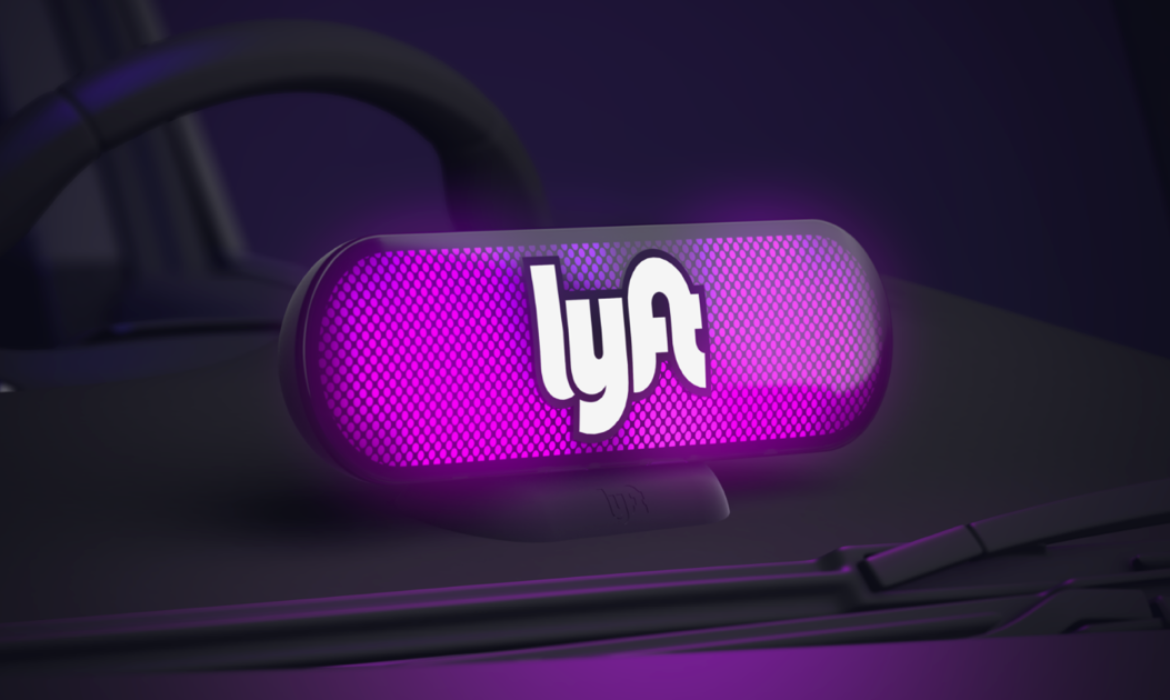Lyft’s App Now Offers Advertising Throughout Passenger’s Journey
The ride-hailing company Lyft revealed that it will be offering users in-app advertisements. To accomplish this, it has introduced its own media and advertising unit, Lyft Media. The current business model relies heavily on ride-hailing. The move is said to boost CEO David Risher’s initiative to drive a turnaround. The company’s bike-sharing units will maintain competitive pricing, reduce costs, and increase sales through strategic alliances. Lyft intends the ads to run as users wait for their trips, connect with drivers, and throughout their trips. It will start running in-app ads, on in-car tablets, on rooftop screens, and at bike-share stations. Later this year, the business also intends to launch video adverts on its app. They’ll also look at other advertising devices, such as in-car screens. Lyft is experimenting with several strategies to develop a more reliable revenue stream. On its designated app, advertisements will appear at the various stages of the consumer experience.
Zach Greenberger, Lyft’s chief business officer said,
Lyft has a captive audience throughout their entire ride journey – waiting for their car, matching with their driver, and in ride – and brands can now reach riders in relevant and tailored ways across our suite of Lyft Media products.
The in-app ads
Lyft customers will see targeted advertisements. The business will gather information from a variety of touchpoints, including payment methods, ride history, and leisure categories. Targeted advertising will have an opt-out option available to users. However, customers won’t be able to turn off the adverts themselves. Every ride, Lyft customers check the app nearly nine times on average. As a result, customers now have numerous chances to see novel adverts. Additionally, Lyft’s capacity to gather first-party data from its users will draw advertising to the platform. For instance, when a customer requests a drop-off near a theater, they will see advertisements for the movie playing there while they wait for an ETA.
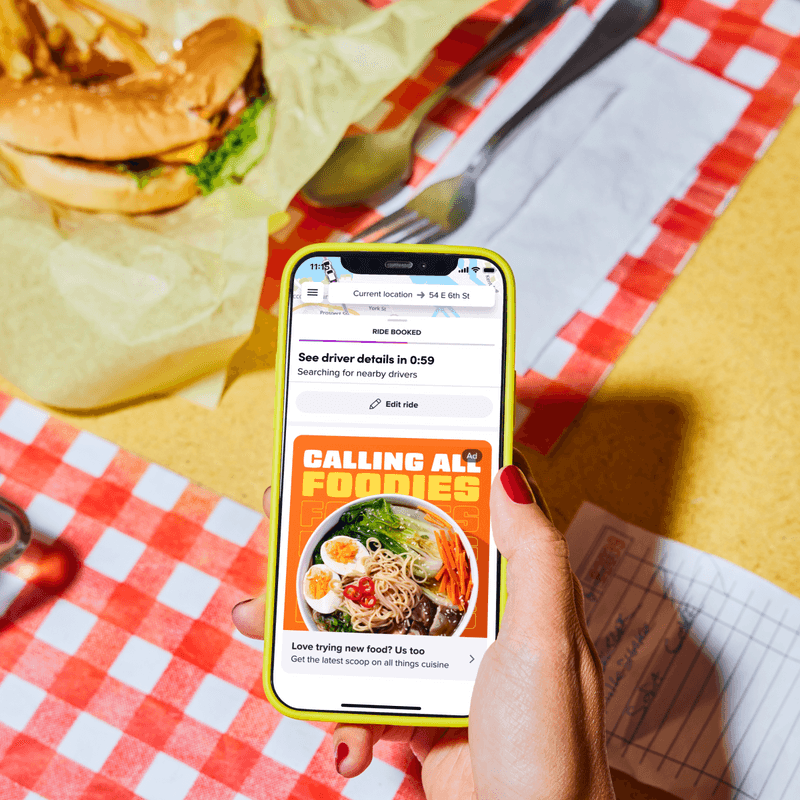
Image credit- Lyft
Currently, Lyft has 800 car top screens and over 6500 vehicles equipped with tablets. Additionally, it runs 3,250 bike stations around the New York, Chicago, and San Francisco metropolitans, majority of which have ad displays. According to Lyft, these advertisements will show up on users’ ETA screens once they connect with a driver and continue during their trip. Additionally, it will play adverts on the in-car tablet that drivers can use to increase their income through advertising and tips. It is still unclear, though, what portion of the ad revenue will go to drivers. Brands will be able to advertise in 12 markets during the initial launch, five markets on digital car screens, and four markets on bike share panels.
Read More: Vistar Media and Ten Square Collaborate for Immersive DOOH
The advertising canvas
Lyft plans to display its ads on its different digital units.
Lyft Halo

Image credit- Lyft
The Lyft Halo is a smart digital rooftop panel. Based on the car location, it can be incredibly efficient at grabbing viewers’ attention with interesting videos. Brands and advertisers will be able to reach large audiences at locations and times that are most beneficial. Through Lyft’s crediting partners, they will be able to monitor the effectiveness of the campaigns as well. Lyft Halo will make it possible to target and measure OOH advertising campaigns to a previously unheard-of.
Lyft tablets
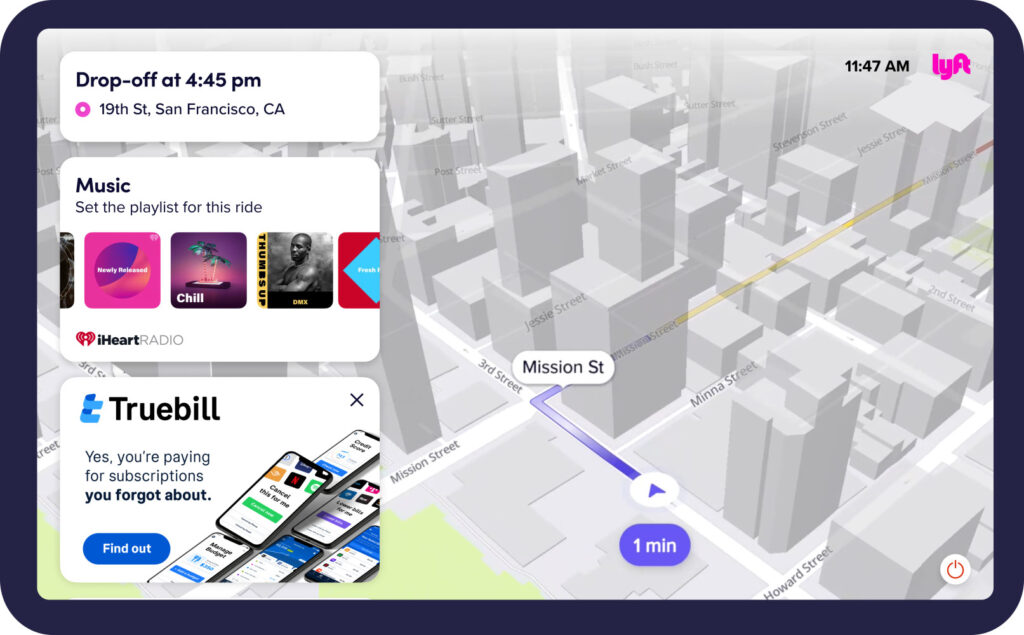
Image credit- Lyft
The rideshare experience will smoothly connect with these in-car tablets. Through its connection with iHeartRadio, it will allow users to follow their journey, critique, and reward drivers, and choose music during the ride. For the duration of the rideshare, brands will be able to deliver dynamic material to a highly engaged audience. Expansion into Los Angeles, Chicago, San Francisco, and Washington, D.C. are the future goals. Additionally, it intends for 25% of all rides on the Lyft platform in these areas to include tablets.
Lyft Bikes
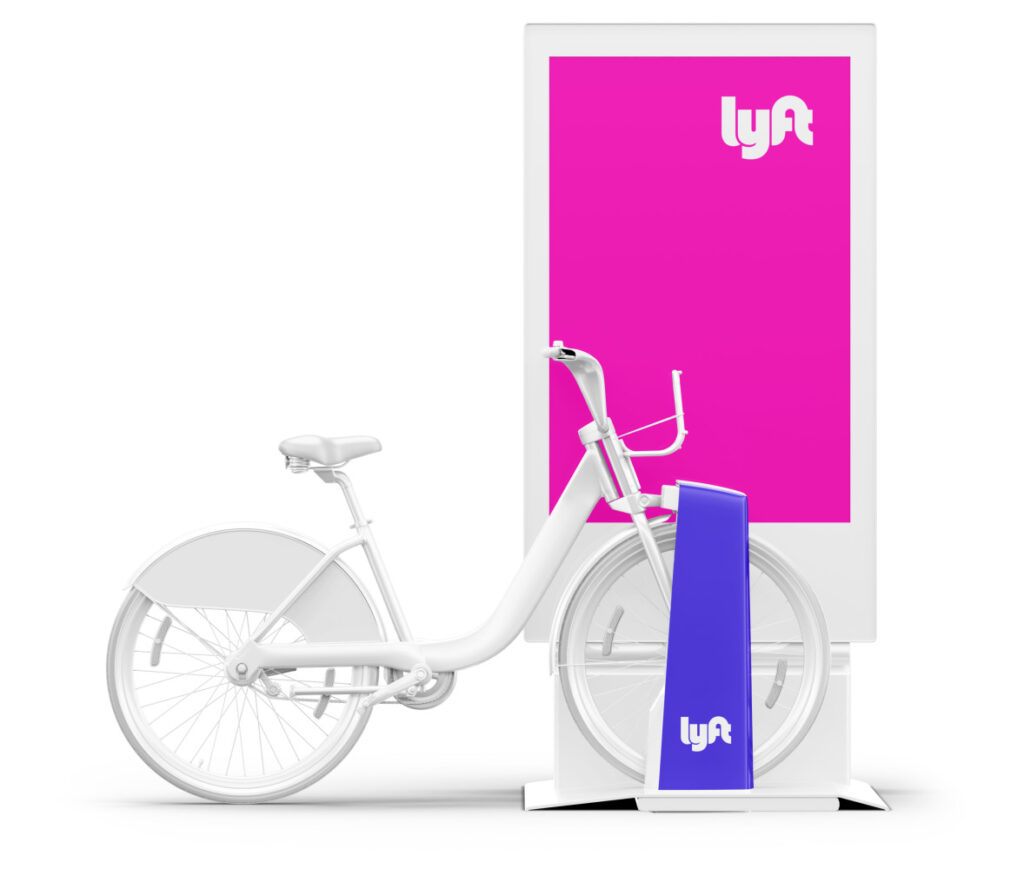
Image credit- Lyft
With more than 3000+ stations, 35,000+ bikes, and 36 million rides each year, Lyft Bikes runs the nation’s largest bike-share network. Its bike-share stations located throughout the cities offer amazing street-level media possibilities at busy intersections. Additionally, Lyft will upgrade the stations to add digital advertisements.
Lyft Skins
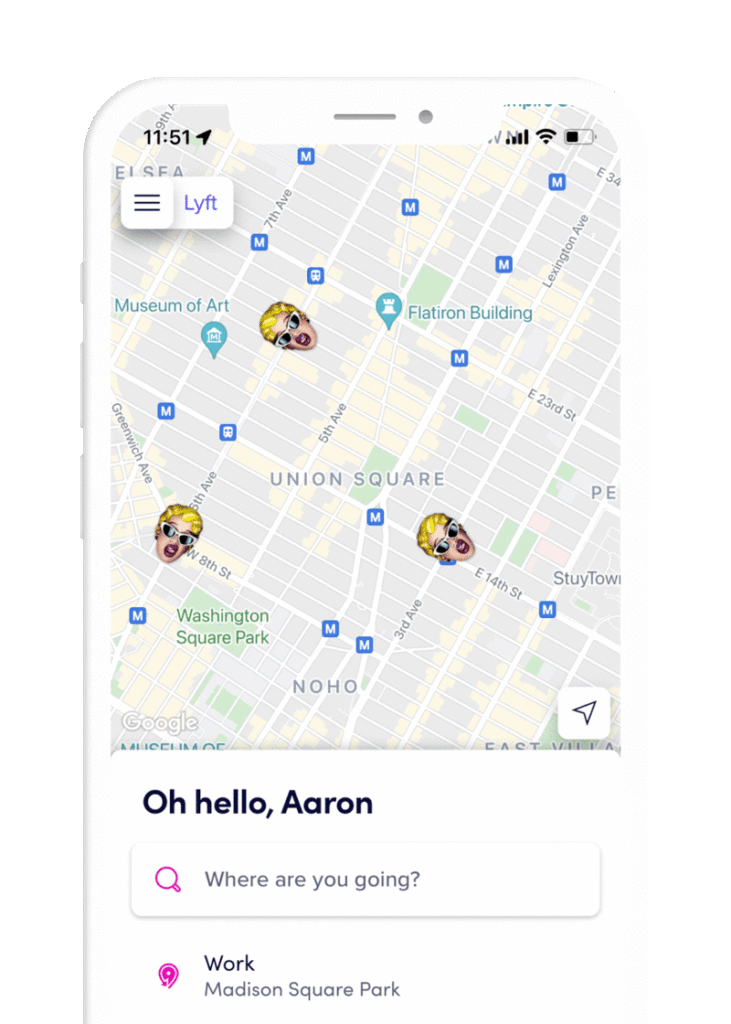
Image credit- Lyft
Advertisers will be able to interact with rideshare consumers on the Lyft App thanks to this innovative method. With a customizable brand symbol and banner, brands will have access to over 20 million active riders. They have collaborated with numerous marketers throughout their portfolio, including DoorDash, Starbucks, Marriott, etc.
Why the step?
Lyft made this decision in light of its ad income increasing significantly and beyond analyst projections. Lyft entering the advertising space was therefore inevitable. It has teamed up with ad tech firm Rokt to sell adverts. Additionally, it has a partnership with measurement company Kantar that enables clients to track ad expenditures. To give customers KPIs, it will also help measure the success of elements like brand recognition and buying intent. It is also developing an in-house advertising technology system.
At first, the same brands will be featured in every advertisement the rider sees while traveling. However, Lyft intends to gradually integrate several brands to purchase advertisements for various parts of the journey. The move also comes a month after its rival, Uber, introduced in-app advertisements. In contrast, Uber offers deliveries and freight brokerage and has a more developed advertising company. Additionally, the business just finished a strong quarter with over $650 million in advertising sales.
Lyft believes that to broaden its portfolio as much as possible, it is crucial to take risks and test out different ad styles. This is so that the financial situation is not disturbed by excessive reliance on one platform or channel. However, customers could still become irritated if repeatedly bombarded with advertisements. Therefore, finding the ideal balance between these two is crucial for Lyft and its advertising. The privacy issues with targeted advertising may discourage advertisers from contacting Lyft. As the business makes its debut in the advertising industry, there will be a long road ahead.
Read More: Lemma and Maxamtech partner to offer real-world DOOH clients Metaverse Billboards

